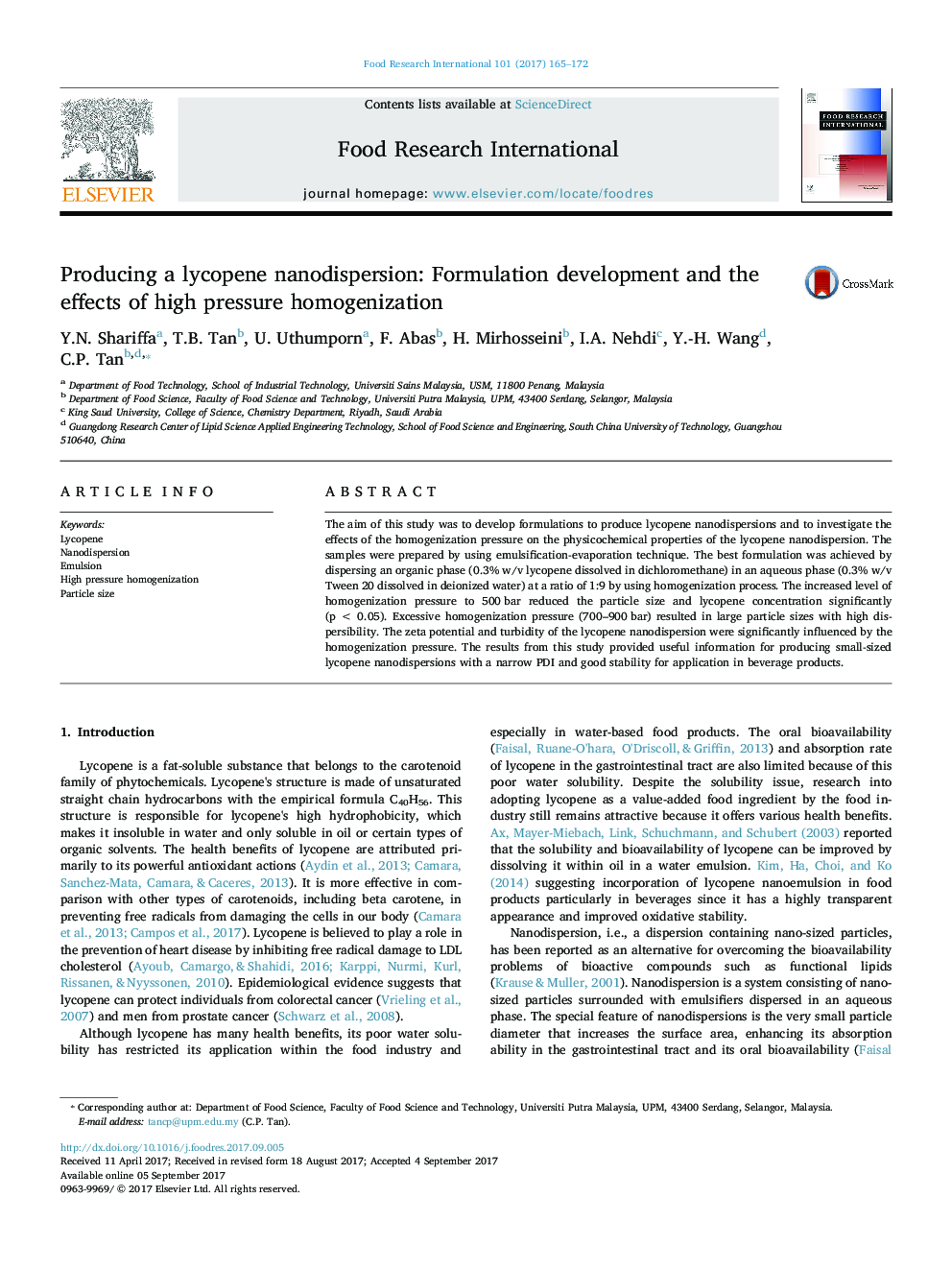| کد مقاله | کد نشریه | سال انتشار | مقاله انگلیسی | نسخه تمام متن |
|---|---|---|---|---|
| 5767804 | 1628450 | 2017 | 8 صفحه PDF | دانلود رایگان |
- Lycopene nanodispersion could be produced using emulsification-evaporation method.
- Appropriate organic solvents are required to fully dissolve lycopene powder.
- Nano-sized lycopene droplets can be stabilized using Tween 20.
- Increasing homogenization pressure reduced particle size of lycopene nanodispersion.
- Excessive homogenization process increased particle size of lycopene nanodispersion.
The aim of this study was to develop formulations to produce lycopene nanodispersions and to investigate the effects of the homogenization pressure on the physicochemical properties of the lycopene nanodispersion. The samples were prepared by using emulsification-evaporation technique. The best formulation was achieved by dispersing an organic phase (0.3% w/v lycopene dissolved in dichloromethane) in an aqueous phase (0.3% w/v Tween 20 dissolved in deionized water) at a ratio of 1:9 by using homogenization process. The increased level of homogenization pressure to 500 bar reduced the particle size and lycopene concentration significantly (p < 0.05). Excessive homogenization pressure (700-900 bar) resulted in large particle sizes with high dispersibility. The zeta potential and turbidity of the lycopene nanodispersion were significantly influenced by the homogenization pressure. The results from this study provided useful information for producing small-sized lycopene nanodispersions with a narrow PDI and good stability for application in beverage products.
205
Journal: Food Research International - Volume 101, November 2017, Pages 165-172
